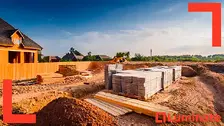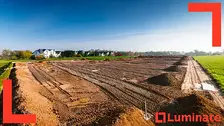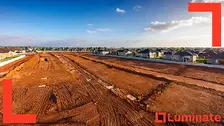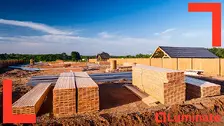The Property Development Process Explained: Your Step-by-Step Guide for New Zealand
 By
Trent Bradley
·
4 minute read
By
Trent Bradley
·
4 minute read

Property development in New Zealand can seem complex, but understanding the process helps developers navigate challenges and maximise success. Whether you're planning your first subdivision or expanding an existing development portfolio, this comprehensive guide breaks down each stage of the development journey.
Phase 1: Initial Research and Site Selection
The development process begins long before any construction starts. Successful developers spend considerable time researching market conditions, demographic trends, and identifying suitable sites.
Market Analysis: Understanding local demand is crucial. This involves studying population growth, employment trends, infrastructure development, and housing supply shortages in target areas. Auckland, Wellington, Christchurch, and other growth centres each present unique opportunities and challenges.
Site Identification: Look for properties with development potential, considering factors such as zoning, topography, access, services availability, and neighbourhood characteristics. Sites near transport hubs, schools, and amenities typically offer stronger development prospects.
Initial Due Diligence: Before committing to purchase, conduct preliminary investigations including LIM reports, title searches, and basic feasibility assessments. This helps identify potential issues early and avoid costly mistakes.
Phase 2: Feasibility Analysis and Financial Planning
Once a potential site is identified, detailed feasibility analysis determines whether the project can deliver acceptable returns.
Cost Estimation: Develop comprehensive cost estimates covering land acquisition, professional fees, consent costs, infrastructure, construction, marketing, and financing. Include contingencies of 10-15% for unforeseen expenses.
Revenue Projections: Research comparable sales, assess market absorption rates, and establish realistic sale prices and timing. Conservative projections help ensure project viability even if market conditions soften.
Financial Modelling: Create detailed cash flow projections showing when funds will be required and when returns will be generated. This analysis is essential for securing development finance and managing project risk.
Risk Assessment: Identify potential risks including market changes, cost overruns, consent delays, and construction issues. Develop mitigation strategies for each identified risk.
Phase 3: Site Acquisition and Legal Framework
With feasibility confirmed, the next phase involves securing the site and establishing the legal framework for development.
Purchase Negotiations: Structure purchase agreements with appropriate conditions precedent, including satisfactory consent outcomes, finance approval, and due diligence completion. Consider options agreements for complex projects requiring extended planning periods.
Detailed Due Diligence: Commission comprehensive investigations including geotechnical reports, contamination assessments, archaeological surveys, and detailed surveying. These reports inform design decisions and consent applications.
Legal Structure: Establish appropriate legal entities for the development, considering tax implications, liability protection, and future exit strategies. Many developers use limited liability companies or unit trusts for larger projects.
Phase 4: Design and Planning Applications
The design and consenting phase often proves the most time-consuming part of the development process in New Zealand.
Professional Team Assembly: Engage qualified professionals including planners, architects, engineers, and surveyors. Their expertise is crucial for navigating New Zealand's complex regulatory environment.
Preliminary Design: Develop concept designs that optimise site potential while meeting market requirements and regulatory constraints. Consider sustainability features and future-proofing elements that enhance long-term value.
Consent Applications: Prepare and submit resource consent and building consent applications. In New Zealand, this may involve resource consents for subdivision, land use, and infrastructure, plus building consents for any structures.
Community Consultation: Engage with neighbours and community groups early in the process. Proactive consultation can prevent objections and streamline consent processes.
Phase 5: Consent Processing and Approval
Resource consent processing varies significantly between councils but typically involves several stages.
Initial Processing: Council planners review applications for completeness and compliance with district plan requirements. They may request additional information or plan modifications.
Public Notification: Depending on project scale and effects, consents may require public or limited notification, allowing submissions from affected parties.
Hearings Process: If submissions are received, consent applications may proceed to hearings before council commissioners or hearings panels. This adds time and cost but provides opportunity to address concerns.
Consent Conditions: Approved consents often include conditions requiring specific actions before or during development. Understanding and budgeting for these requirements is essential.
Phase 6: Development Finance and Funding
With consents approved, securing appropriate development finance becomes the priority.
Finance Applications: Present comprehensive proposals to lenders including detailed project costings, cash flow projections, pre-sales evidence, and professional team credentials. Development finance differs significantly from standard mortgages.
Staged Funding: Development loans typically release funds in stages aligned with project milestones. Common stages include land settlement, infrastructure completion, construction commencement, and practical completion.
Security Requirements: Lenders require comprehensive security including mortgages over project land, personal guarantees from directors, and sometimes additional property security.
Interest Rate Considerations: Development finance often carries higher interest rates than investment property loans, reflecting increased risk and flexible funding structures.
Phase 7: Infrastructure Development
Physical development begins with infrastructure installation, particularly important for subdivision projects.
Earthworks and Services: Install water, wastewater, stormwater, electricity, telecommunications, and roading infrastructure according to consent conditions and council requirements.
Quality Assurance: Implement rigorous quality control processes and regular inspections. Poor infrastructure installation can result in costly rectification and delayed project completion.
Council Inspections: Coordinate required council inspections throughout infrastructure development. Failing inspections can cause significant delays and additional costs.
Phase 8: Construction Phase Management
For projects involving building construction, effective project management is crucial for success.
Contractor Selection: Choose experienced builders with strong references and appropriate insurance coverage. Fixed-price contracts help control costs but require detailed specifications.
Progress Monitoring: Regular site visits and progress meetings ensure projects stay on schedule and budget. Address issues promptly to prevent escalation.
Variation Management: Control project variations carefully, as these can significantly impact profitability. Document all changes and cost implications.
Phase 9: Marketing and Sales
Successful marketing starts early and continues throughout the development process.
Market Positioning: Develop clear value propositions highlighting unique features, location advantages, and target buyer benefits.
Pre-Sales Strategy: For larger developments, achieving pre-sales helps secure development finance and reduces market risk. Offer appropriate incentives while maintaining margin requirements.
Sales Process Management: Establish efficient sales processes with experienced real estate professionals who understand the local market and development product.
Phase 10: Project Completion and Settlement
The final phase involves completing all regulatory requirements and settling with purchasers.
Code Compliance Certificates: Obtain all required certificates confirming work completion and compliance with consent conditions.
Title Issuing: For subdivision projects, work with Land Information New Zealand (LINZ) to issue new titles for individual lots.
Settlement Coordination: Coordinate settlements with purchasers, ensuring all legal requirements are met and funds are received according to sale agreements.
Project Review: Conduct thorough project reviews identifying lessons learned and areas for improvement in future developments.
Key Success Factors
Successful property development in New Zealand requires careful attention to several critical factors:
Professional expertise and experienced team members are essential for navigating complex regulatory requirements and technical challenges. Adequate funding and cash flow management prevent project delays and cost overruns. Realistic timeframes and contingency planning help manage unexpected issues.
Market awareness and flexibility allow developers to adapt to changing conditions while maintaining project viability. Risk management through appropriate insurance, legal structures, and conservative financial planning protects against downside scenarios.
Working with Development Finance Specialists
The complexity of property development requires specialist financing solutions that understand the unique characteristics of development projects. Traditional bank mortgages rarely provide the flexibility and expertise required for successful development outcomes.
At Luminate Finance, we work alongside developers throughout the entire process, providing tailored finance solutions and expert guidance to help turn development concepts into profitable realities.
Planning your next development project? Contact Luminate Finance to discuss how our specialist development finance solutions can support your success from site acquisition through to final settlement.

Trent Bradley
Trent Bradley is a New Zealand financial advisor specializing in property-backed finance and investment consulting. With over 26 years of experience running his mortgage broking business, he has helped wholesale investors access high-yield property-backed loan opportunities. For the past 12 years, Trent has led Luminate Finance, a New Zealand finance company dedicated to connecting investors with secure property investment solutions.





























.png?//48413319.fs1.hubspotusercontent-ap1.net/hubfs/48413319/Featured%20images%20(14).png&width=247&height=126&name=Featured%20images%20(14).png)



